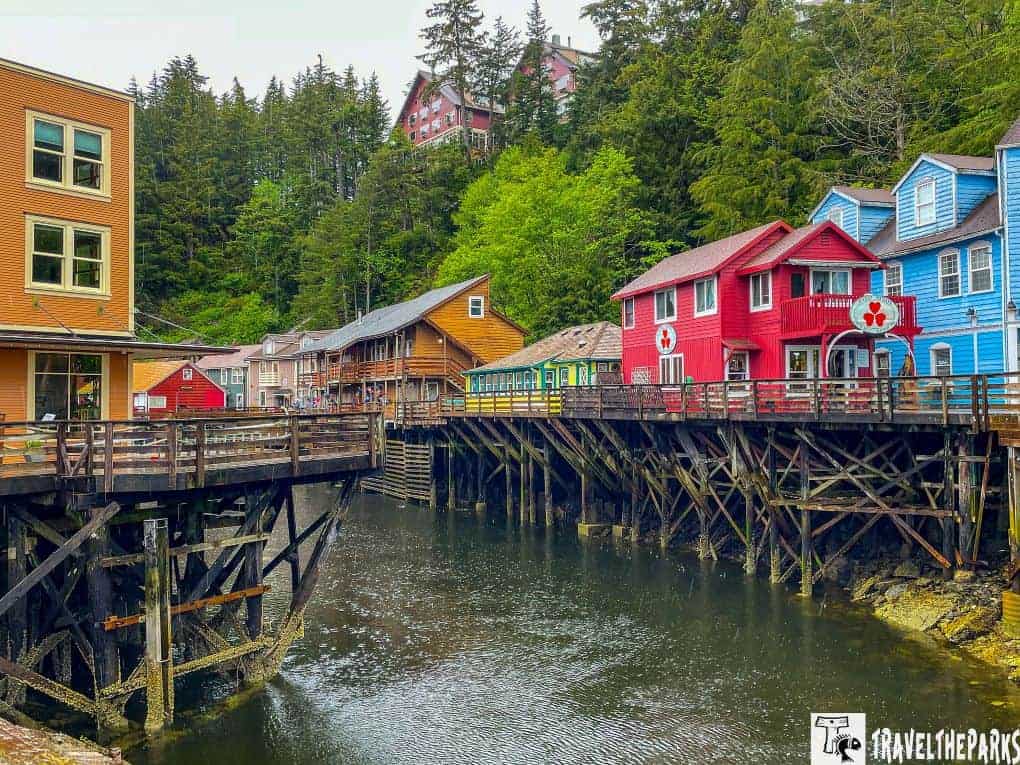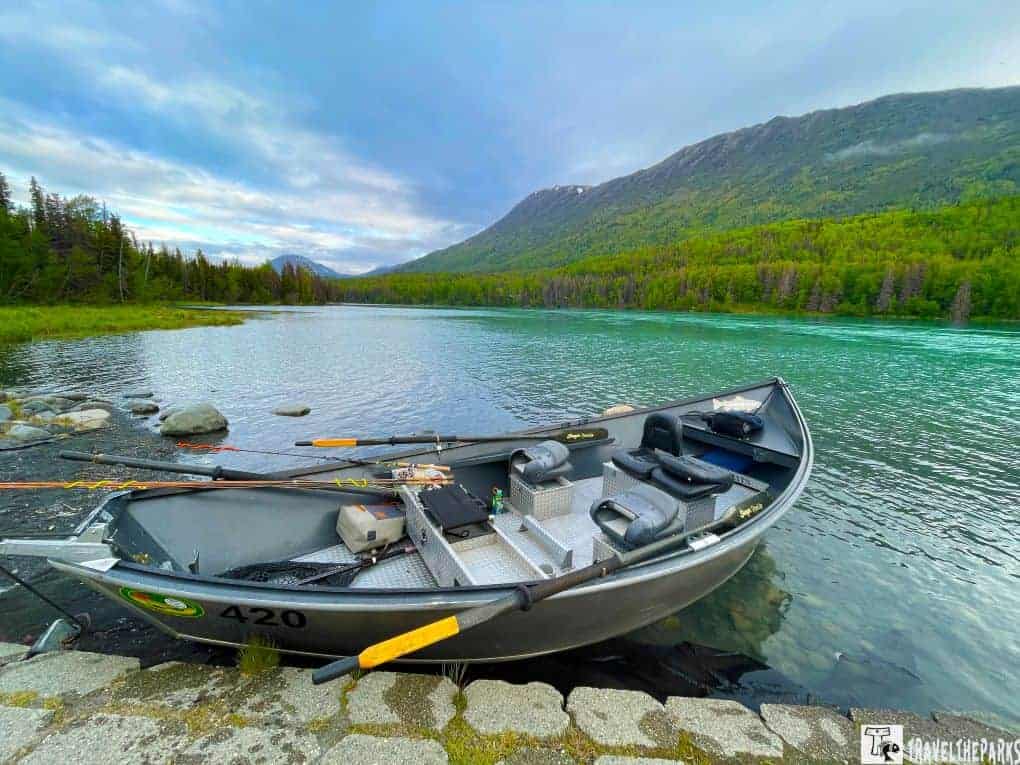We recently had the pleasure of embarking on a day trip that completely transformed our understanding of what Ketchikan, Alaska, has to offer. As someone who loves exploring new places but often finds themselves overwhelmed with options, I hope sharing our experience during our Alaska inside passage cruise will help you make the most of your own 1-day Ketchikan visit.
This post may contain affiliate links, meaning if you purchase something through one of these links, we may earn a small commission at no extra cost to you! Read the full disclosure policy here.
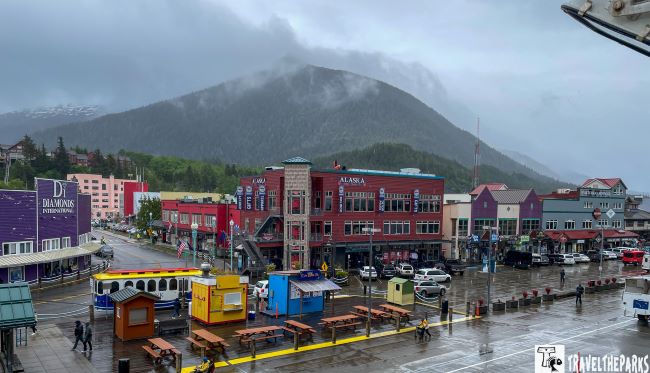
Table of Contents
The Problem: Too Many Choices, Not Enough Time
I know what you’re thinking: “Can I really experience Ketchikan in just one day?” The answer is a resounding yes! Like many of you, I always find it challenging to make the most out of a short trip. My first thought was, “Where do I even begin?” I didn’t want to miss out on anything, but I also didn’t want to feel rushed. The problem we always have is that there are just too many options to choose from, yet not enough time to do it all. Sound familiar?
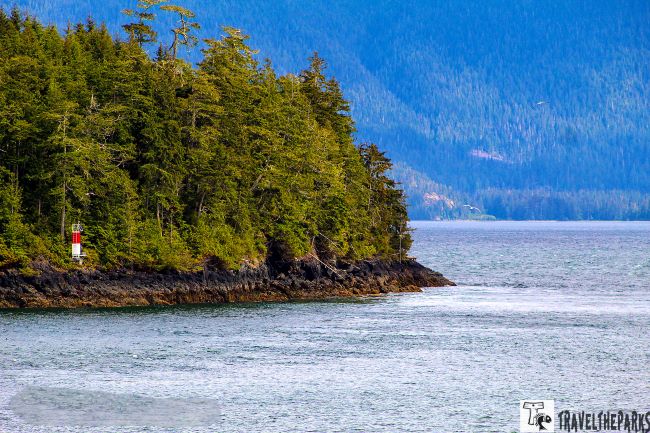
The Solution: Make the Most of One Day: Our Ketchikan Itinerary
This day trip itinerary is the perfect solution. It’s designed to provide an immersive experience, showcasing Ketchikan’s rich history, stunning natural beauty, delectable cuisine, and vibrant culture – all in a single unforgettable day.
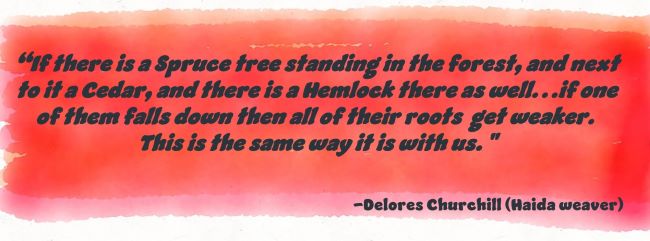
Discover Ketchikan: Gateway to Southeast Alaska
Ketchikan (Kichxáan) serves as the gateway to the Inside Passage. For most cruise ships, Ketchikan is a launching pad for adventure activities, beginning with its vibrant waterfront teeming with life. However, Ketchikan proudly wears the unofficial crown of “Rain Capital of North America.” With an average annual rainfall of around 153 inches, today is not an exception as we enter the port city under dreary wet skies. The Liquid Sunshine Rain Gauge outside the Visitor Information Center shows the current rainfall total is close to 180 inches.
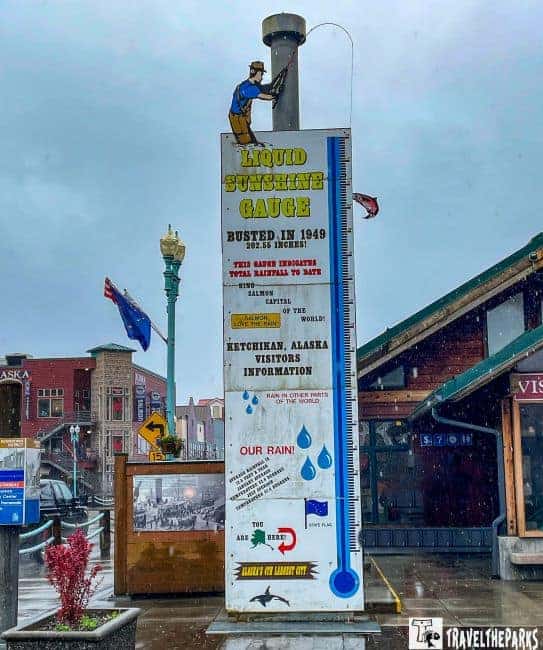
PRO Tip: Ketchikan’s weather can be unpredictable. Pack layers and waterproof gear. Popular tours and activities can fill up quickly. Plan and book early to avoid disappointment.
Get Oriented: Begin at the Ketchikan Visitor Information Center
In spite of the constant downpour, we were eager to get started exploring Ketchikan. As we disembark the ship, I am immediately struck by the vibrant, colorful buildings and totems lining the waterfront. A quick stop at the Ketchikan Visitor Information Center provided us with a helpful walking tour map we used to explore the area. The free shuttle bus service in Ketchikan offers a convenient and cost-effective way for locals and tourists to navigate the downtown area. Municipal bus service to rural areas (Totem Bight State Park) is $2 for adults or $5 for a day pass.
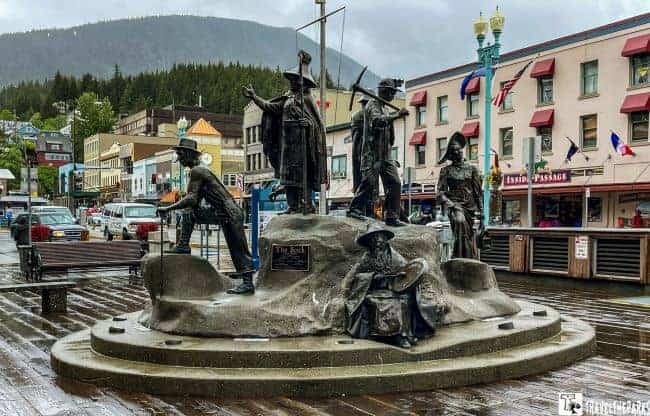
Ketchikan’s ‘The Rock’: A Must-See Historic Tribute
Outside the Visitor Information Center we discovered “The Rock.” This interesting sculpture, designed by Dave Rubin, depicts six figures that helped to shape Ketchikan’s history. Fishermen are first; they’ve contributed to the economy specifically through salmon fishing. Next is the miner, as miners used the port as a starting point on the journey to the Goldrush fields. A logger symbolizes logging, an aviator (bush pilot) represents rural life, and frontierswomen embody pioneer spirit. The Native drummer symbolizes the Tlingit leader Chief Johnson, a real historical figure.
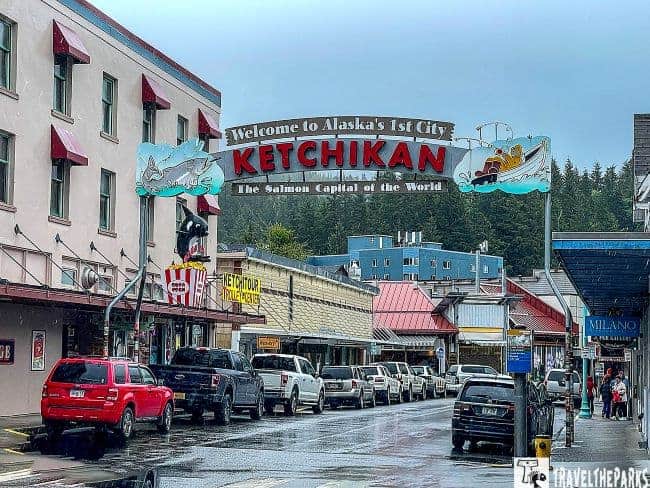
Under the Arch: Where Our Ketchikan Experience Begins
Next, we headed directly across the street to the welcome arch. In the early 1920s, they constructed the first welcoming arch to greet arriving steamship passengers. A neon-illuminated arch installed by the local Chamber of Commerce later replaced this in the 1950s. The arch that stands today, erected in 1996 by the non-profit Historic Ketchikan Inc., is the most iconic and recognizable iteration. The historic landmark. “Salmon Capital of the World”, now greets thousands of cruise ship passengers.
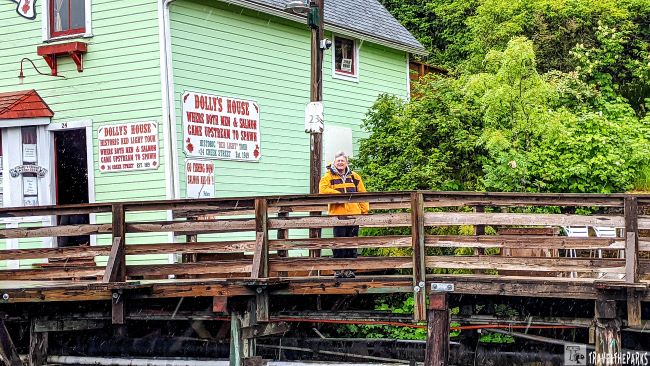
Best Things to Do in Ketchikan: Walk Along Creek Street
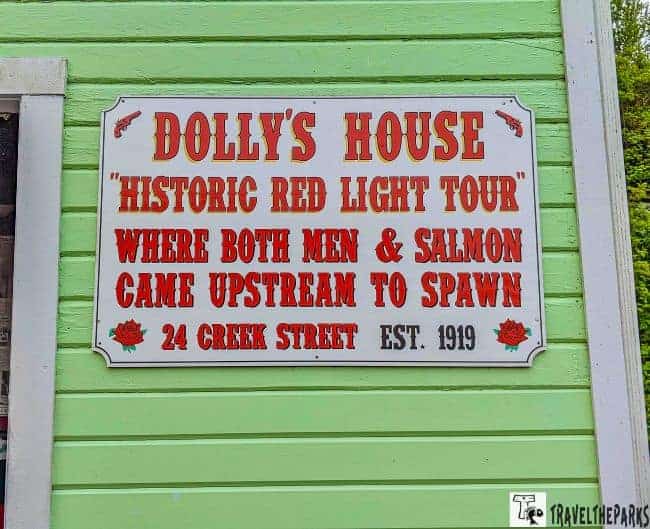
We started early in the morning, strolling over to the famous Creek Street boardwalk. Built on stilts, it overlooks Ketchikan Creek (Kichxáan Héeni). This historic boardwalk once served as the town’s red-light district (1903-1954). Today, it’s a charming area filled with quirky shops and galleries. Noteworthy is Dolly House, a “house of ill repute.” The 2nd floor of the building is a museum where you can go on a self-guided tour for a fee. The furnishings belonging to Dolly Arthur, the madam, accurately depict the early 20th century period. Some items may be a bit risqué, but I’ll leave that to you.
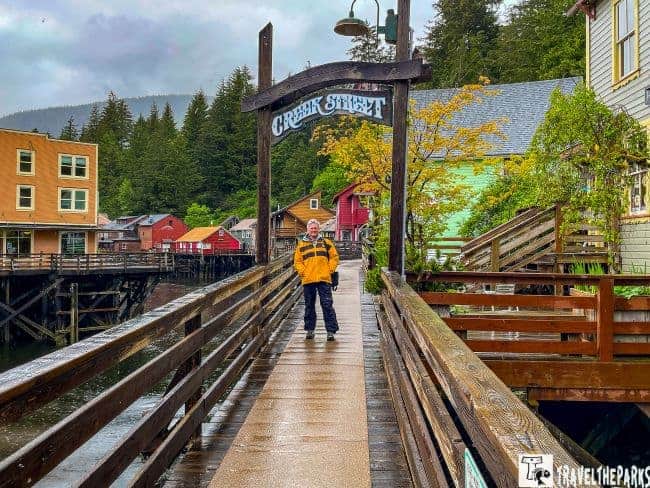
Look for informative signs and plaques scattered along the boardwalk that provide insights into Creek Street’s history. By reading these, it surprised me that independent women (madams) ran many brothels in the early 1900s. These women were shrewd business owners who managed and owned their establishments. They defied the societal norms of the time.
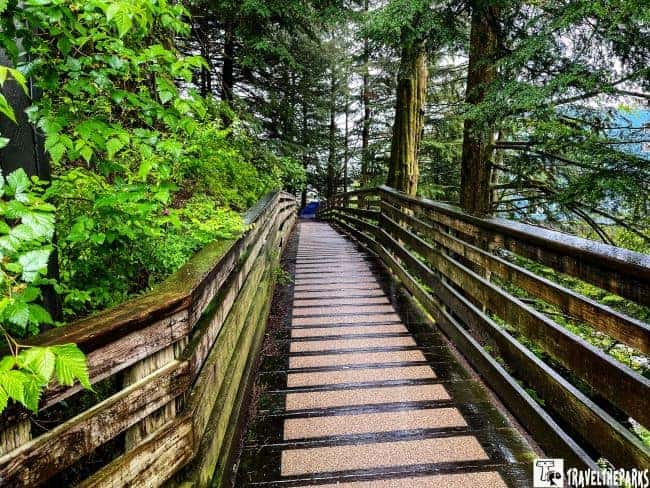
Hiking Married Man’s Trail & Observing the Salmon Fish Ladder
Continuing down the boardwalk, we come to the Married Man’s Trail. This hidden path runs parallel to Creek Street towards the old fish hatchery. Originally, it was a kind of back door used by men sneaking out of the brothels who wanted to remain unseen. While not as exciting today, it’s a quick detour running along the fish ladder. If you come during late June and September, you might witness salmon moving upstream directly beneath you! Just to the side of the trail is an artificial fish ladder. It helps salmon bypass the waterfall on Ketchikan Creek so the salmon can reach their spawning grounds.
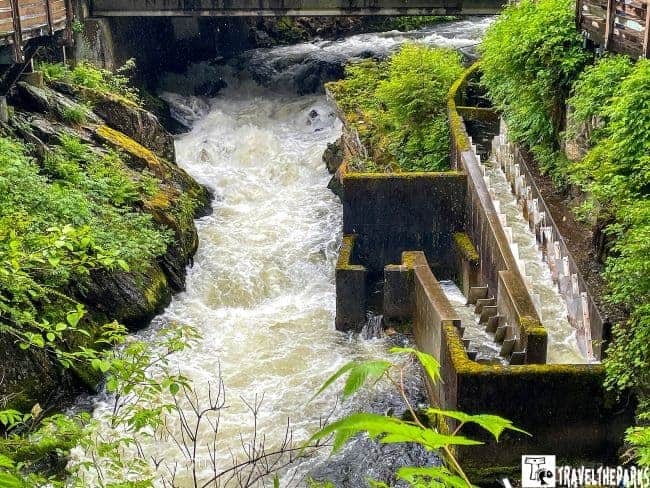
Today, it would have been nice to use the Cape Fox Tram funicular-Cape Fox Hill. It is a type of inclined elevator leading up from Creek Street to Fox Creek Lodge. However, it was not operating during our stay, so we kept walking toward the old fish hatchery.
NOTE: The Cape Fox Tram funicular is running again! The tram runs every day.
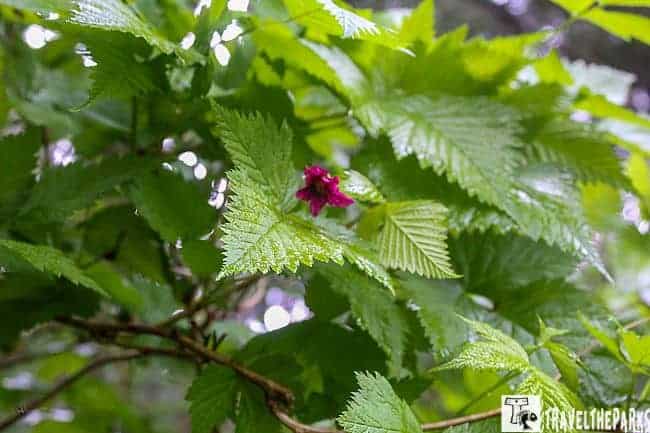
Exploring Ketchikan’s Fascinating Museums
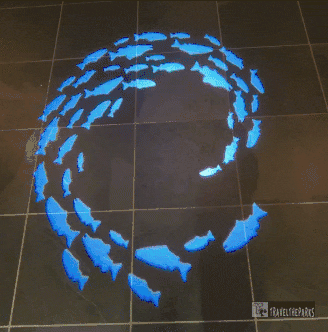
To make the most of a rainy day, we took shelter inside the Tongass Historical Museum. Admission is not expensive. A combination ticket includes entrance to the Totem Heritage Center. If you want to learn about the local culture of the Tongass Historical Museum, this is the best museum. On the Edge: Stories From Ketchikan’s Working Waterfront details the lives of those who rely on the local resources for their livelihood. Their stories were interesting and genuine.
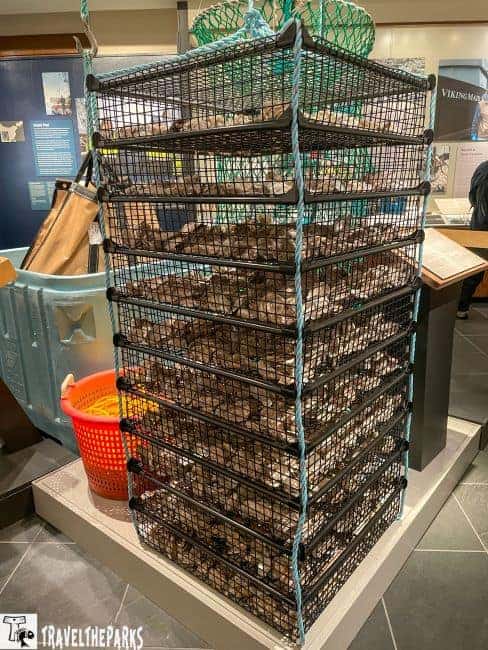
We then visited the Totem Heritage Center by taking the free town shuttle. Inside this museum is a remarkable collection of totem poles. Standing on the ancestral lands of the Taantʼa Kwáan and Sanyaa Kwáan Tlingit First Nations, the Totem Heritage Center felt especially significant. Each of these intricately carved giants tells a story that represents the beliefs of the Tlingit people. The exhibits feature tools, utensils, weapons, and ceremonial objects used by the Tlingit, Haida, and Tsimshian First Nations. My favorite items in the collection were the “Raven Stealing the Sun” and the “Salmon Run Drum 2019.”
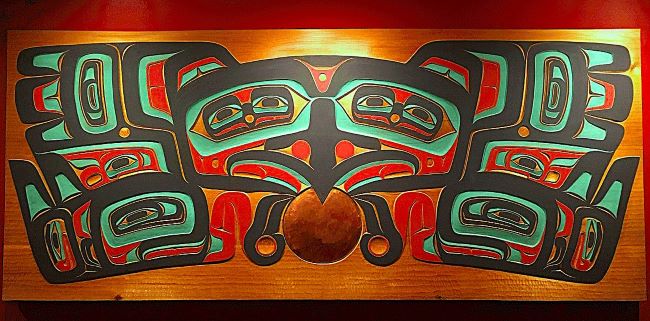
This carved red cedar panel by Tlingit artists Nathan Jackson and Ernest Smeltzer represents the story of how Raven stole the sun and released it into the sky, bringing light to the world.
Top Stop on a 1-Day Ketchikan Experience the Southeast Alaska Discovery Center
Just by chance, we stumbled upon the Southeast Alaska Discovery Center, a hidden gem. Operated by the U.S. Forest Service, it serves as an Alaska Public Lands Information Center. Gateway to the Tongass National Forest, it features documentary films, thoughtful interpretive exhibits about native cultures, and displays on local flora and fauna. We were pleased to use our America the Beautiful Interagency National Park Pass at the center.
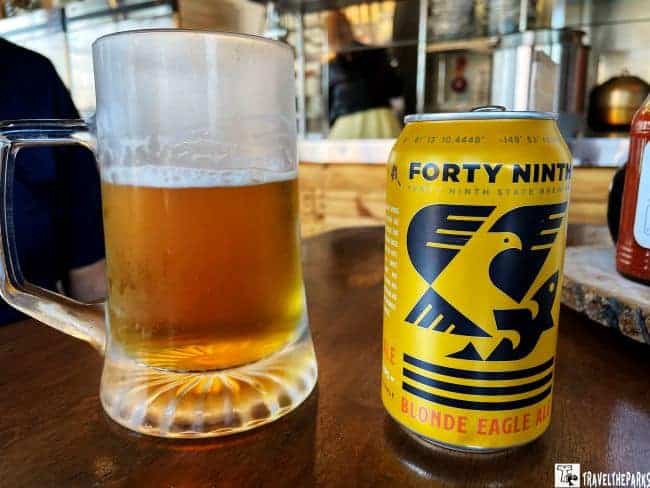
We stopped by 108 Taphouse for a tasty snack before heading out for our adventure. We shared an AK burger which was made with an elk patty and was delicious. This pub had a great variety of craft beers to choose from, which made our experience even better. The best part was the quick service, as it allowed us to enjoy our meal and get on with our day.
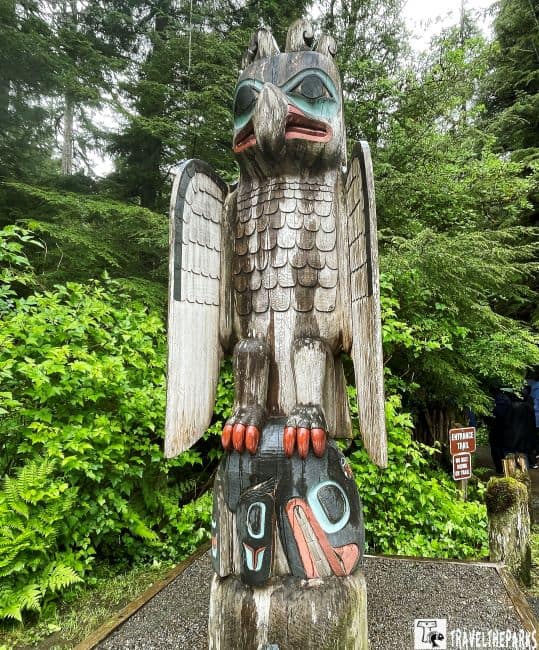
Totem Bight Historical State Park: A Shore Excursion Adventure in the Great Outdoors
We did this as a part of our Holland America afternoon excursion. If you do not want to pay the high price for a shipboard excursion in Ketchikan, you can use the Municipal Transit Bus ($5 R/T) to make the trip out to Totem Bight State Historical Park. The park is located 10-miles north of the town center beside Potlatch park, another little gem (we did not have time for this today). This park is part of the Tongass National Forest and lies in an old growth forest.
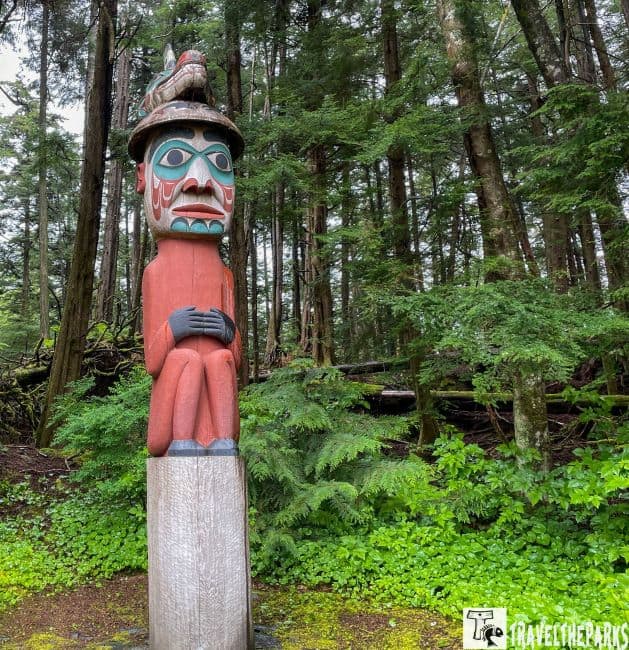
On our excursion, we had an expert guide. Our guide did a terrific job explaining the stories behind each totem pole. Learning about native cultures is always a plus for me whenever I visit a new destination. There was an interesting replica of an old Tlingit grave marker from Cat Island, called “The Man Wearing a Bear Hat.” It symbolizes strength, courage, and resilience. The message reminds us to stay true to ourselves in spite of adversity and maintain a positive attitude.
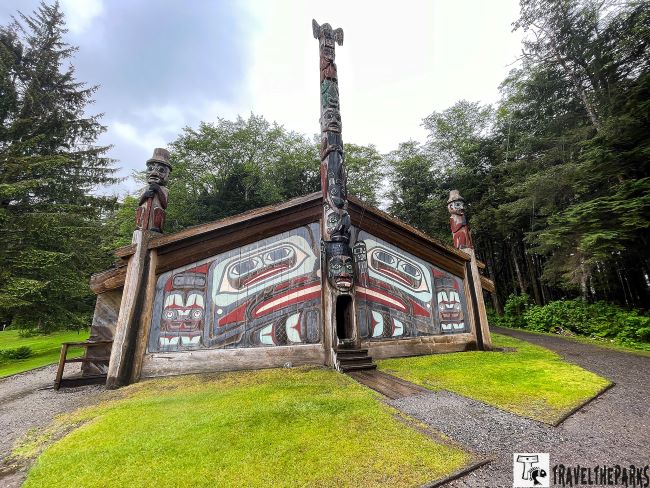
Step Inside the Clan House at Totem Bight Historical State Park
Exploring the maze of totem poles provided us with an insight into the cultures of the Tlingit, Haida, and Tsimshian people. In the Clan House, a totem of Duk-toothl, a man of the Raven phratry, stands tall. The totem pole depicts Duk-toothl, a man of the Raven phratry, wearing a weasel skin hat, demonstrating his great strength by tearing a sea lion in two. As we trek through the labyrinth of totem poles, we take in the sights and sounds of the rainforest. Having this experience has left a lasting impression on me. The last stop was the gift shop. Local artisans handcrafted all the items. Their prices were very reasonable, and the staff was friendly.
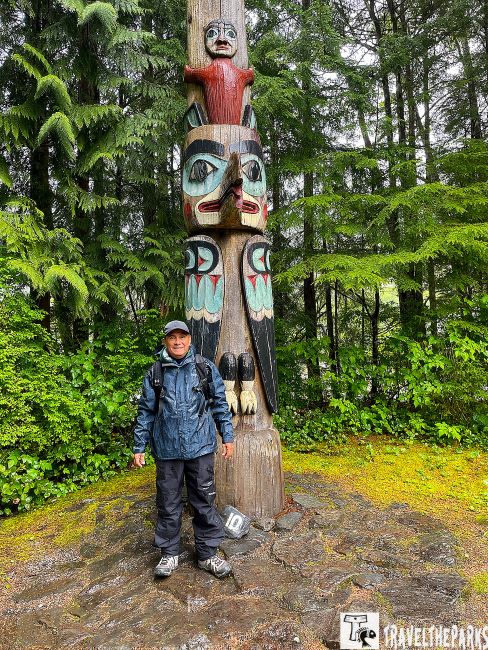
A Quick Stop at the Saxman Native Village Totem Park as Part of a Ketchikan Cruise Port Itinerary
Nearing the end of our day, we took a free shuttle that took us to the Saxman Native Village about 2 miles south of Ketchikan. The park seems more tourist-driven than Totem Bight State Park. If I had to choose just one park, I would pick Totem Bight. It was by far my favorite. At Saxman Native Village, you can see an artist carving a totem pole, which isn’t something you see every day. I enjoyed watching the artists carve the totems using traditional tools.Its good to see young people continuing the traditions.
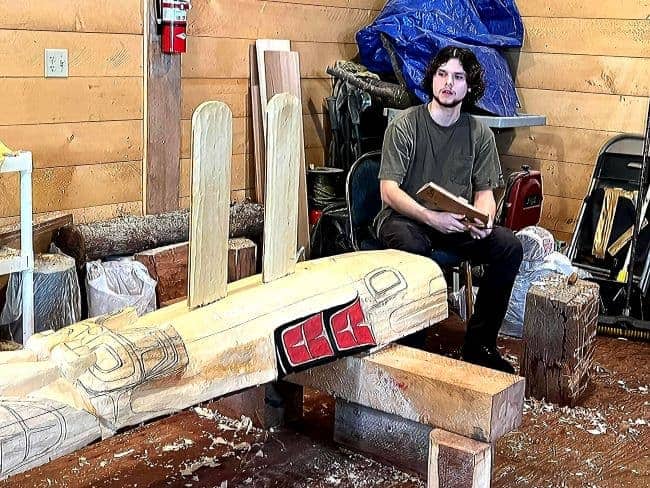
Moving into the traditional clan house, we witnessed a traditional dance performance. The dancers wore stunning regalia. The dances were historically different from those we had watched in Anchorage at the Alaska Native Heritage Center. Today’s performances told powerful stories of their ancestors. It was a beautiful way to conclude the day, leaving me with a sense of respect for the local culture.
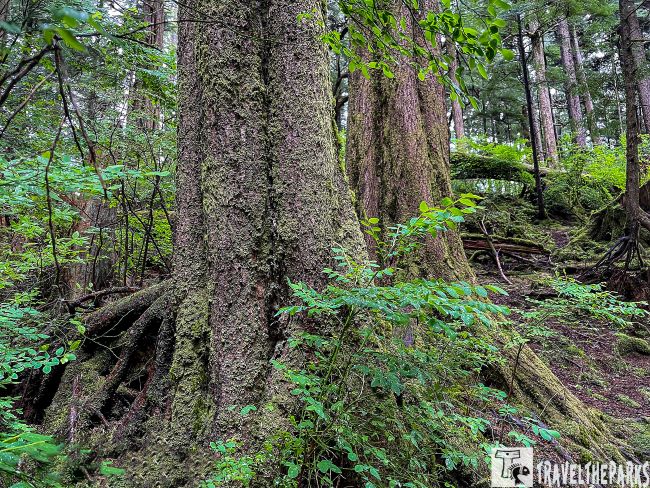
One of the Best Things to Do: Attend the Lumberjack-Show-Chop, Saw, and Climb
Our last stop on the city tour was the Great Alaskan Lumberjack Show. We’ve been to some lumberjack events before while attending Fleming College. We were excited to see what events awaited us at the Great Alaskan Lumberjack Show, and it turned out to be a thrilling surprise. Skilled lumberjacks competed in log rolling, axe throwing, and other lumberjack challenges. Witnessing the high-energy show and friendly rivalries is a fun way to end the day.
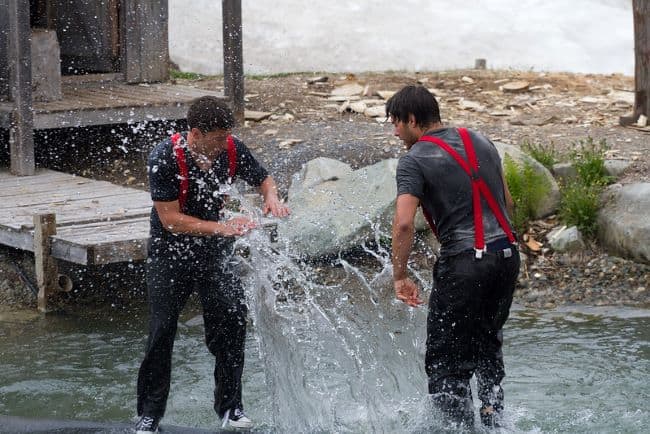
Eagle Park: Experience a Ketchikan Hidden Gem
Just a short walk from the cruise terminal on Front Street is Eagle Park. The central sculpture, “Thundering Wings,” was carved from cedar by world-renowned Tlingit master carver Nathan Jackson of Ketchikan. The Eagle (Kitschk-Hin) is a great place to take a selfie with the Ketchikan tunnel in the background. This tunnel in Ketchikan made it into the Guinness Book of World Records for being the only tunnel people can drive through, drive around, drive over. The construction crew built the tunnel through Knob Hill in 1954 to establish a connection to Newtown. It spans ~1,200 feet and is 15 feet wide.
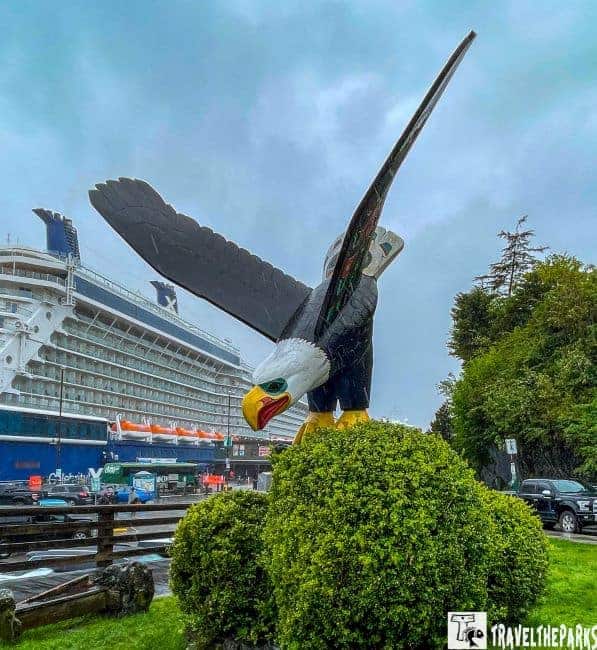
Short on time before our cruise’s departure, we spent our time perusing the waterfront shops for that perfect souvenir. Much like Juneau, the shops here cater to tourists. Escaping the hustle and bustle, we took a last-minute walk to Whale Park. Small, it showcases a few totems and colorful flowering plants. When it’s not raining, the benches are a restful reprise.
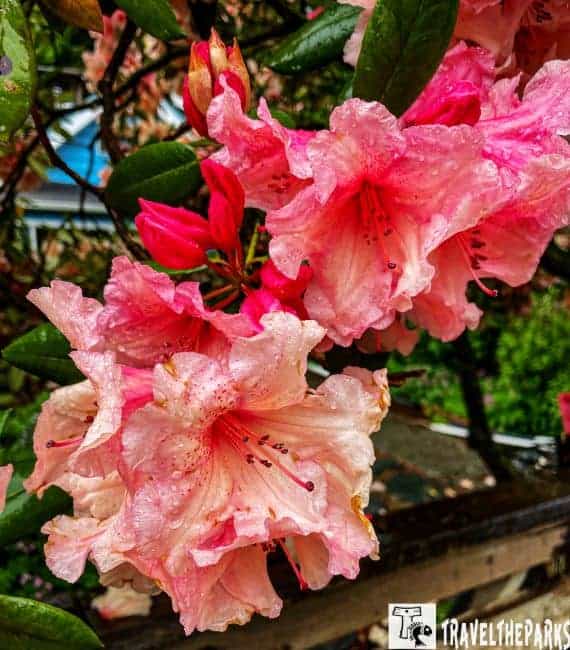
What other Experiences are there to do in Ketchikan in 1-Day?
Consider joining a guided kayak tour during your time in Ketchikan. As you paddle through the serene waters, you’ll feel completely immersed in nature. Knowledgeable guides will point out fascinating wildlife, from soaring eagles to lounging seals. This peaceful yet exhilarating experience will leave you with a deeper appreciation for Alaska’s wild beauty.
- Hiking Trails: Immerse yourself in the lush rainforests by hiking the Deer Mountain Trail or the Rainbird Trail, both of which offer breathtaking vistas and opportunities to reconnect with the natural world.
- Fishing Expeditions: People know Ketchikan as the “Salmon Capital of the World”. If you prefer fishing, consider joining a guided fishing tour. The waters here are a great place to try your luck at catching king salmon or halibut.
- Kayaking and Canoeing: Paddle through the serene waters of the Misty Fjords National Monument. The dramatic cliffs and waterfalls will leave you in awe.
- Rainforest Sanctuary: want to see wildlife? This excursion takes you through a 40-acre private preserve on a guided nature walk.
- Alpine Zipline Experience: Looking for an adrenaline rush? A zipline through the towering old-growth Tongass National Rainforest will give you an amazing adventure.
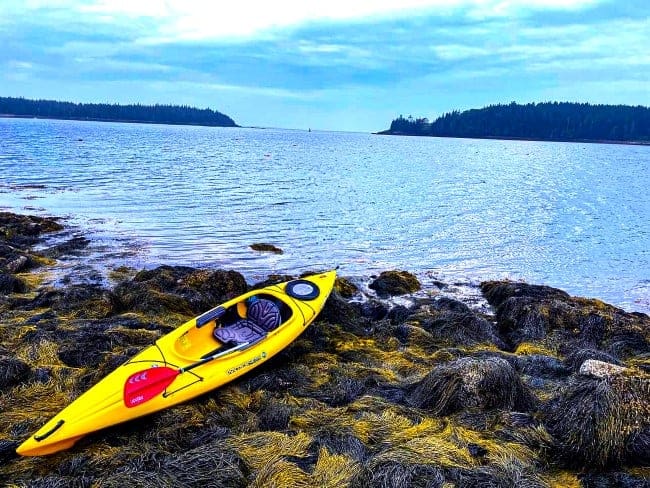
Final Thoughts: How We Made the Most of Our 1-Day Ketchikan Experience
Ketchikan isn’t just another stop on your cruise trip. It’s a treasure trove of experiences. By the end of the day, I felt enriched, having experienced a well-rounded taste of this charming Alaskan town. History buffs will love it. Outdoor lovers will too. Food fans won’t be disappointed. Ketchikan really has it all. Trust me, exploring its charms will create memories that will last a lifetime. Our 1-day Ketchikan experience left us wanting more.
Have you cruised to Ketchikan? Share your thoughts and experiences with us in the comments below.

